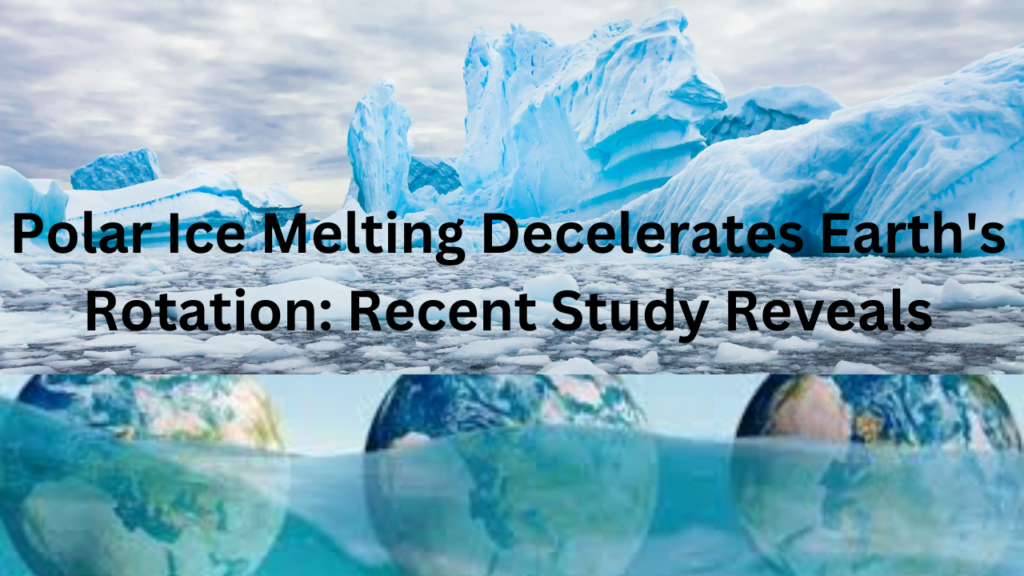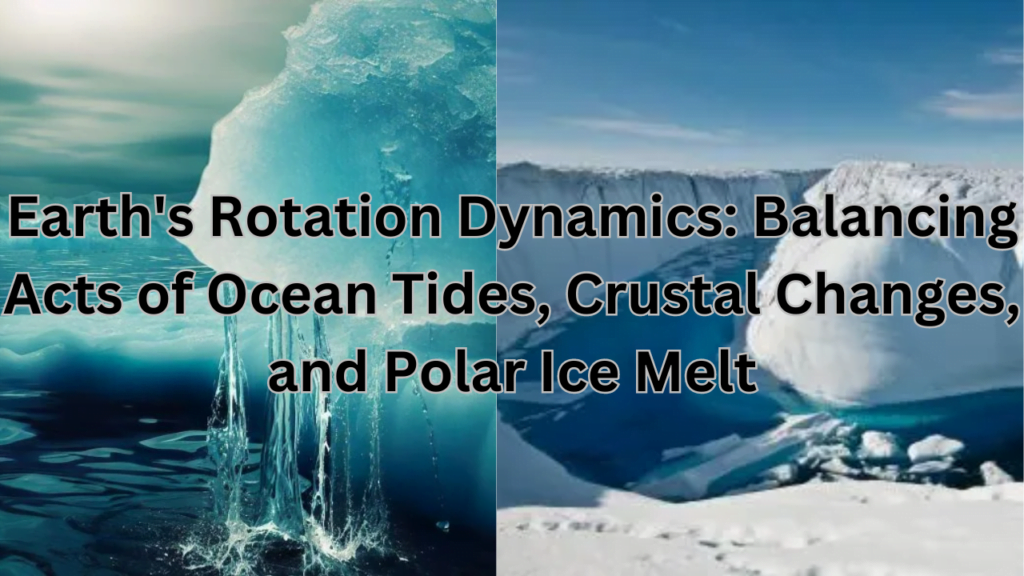A recent study revealed that the Earth’s rotation is changing due to melting of polar ice brought on by climate change, resulting mass being redistributed on the planet.
The rotation of the Earth has slowed slightly due to global warming, which may have an impact on how we measure time.

According to a research released on Wednesday, the Earth’s rotation speed has decreased due to the melting of polar ice, which is a process that is becoming faster due to climate change caused by humans.
When the ice in the poles melts, it alters the location of Earth’s mass concentration, according to research author Duncan Agnew, a geophysicist at the University of California, San Diego’s Scripps Institution of Oceanography. The change, in turn, influences the planet’s angular velocity.
Comparing the situation to a figure skater spinning on ice, Agnew stated, “She will slow down if she lowers her arms or stretches out her legs.” A skater will, however, spin more quickly if their arms are pulled inward.
Because of this, there is more mass around the equator, or Earth’s waist, and less solid ice at the poles.
Thomas Herring, a geophysics professor at the Massachusetts Institute of Technology who was not involved in the new study, explained that what is happening with the ice melt is that fluids that are stored as solid ice in places like Antarctica and Greenland are being melted and moved to other parts of the planet. “The equator is where the water flows off.”
In short, the study indicates that a force that has long been thought to as constant and outside of human control has been altered by human impact. This is something that astronomers, scientists, and academics have been studying for millennia.
We’ve accomplished something that quantifiably alters the speed at which the Earth revolves, which even I find astounding, according to Agnew. “Unprecedented events are taking place.”
His research, which was published in the journal Nature, indicates that the Earth’s rotation is being affected by climate change to the extent that it is counteracting an opposing trend. The Earth has been spinning faster in recent decades due to a variety of causes. This is a transient tendency that has led scientists to propose, for the first time, deducting a single “negative leap second” from clocks globally as early as 2026. However, Agnew claims that the potential has been postponed by around three years due to the melting of polar ice.
Computer networks may experience disruptions if timekeeping organizations ultimately choose to incorporate a negative leap second.
Although Earth’s daily rotation appears to be steady across millions of years, it has historically trended slower in the absence of climate change, which is why leap second modifications have been required.
According to a research published in Paleoceanography and Paleoclimatology, days were shorter and lasted about 23.5 hours approximately 70 million years ago. That indicates that 372 days a year made up the world that the Cretaceous dinosaurs lived on.

Earth’s Rotation Dynamics: The Interplay of Ocean Tides, Crustal Shifts, and Polar Ice Melt
The Earth’s rotation is slowed by the friction of ocean tides, which is partly caused by the moon’s gravitational pull. In the meantime, the Earth’s crust has been rising in certain areas since the end of the last Ice Age as a result of the weight of the ice sheets melting. This causes a change in the distribution of mass and accelerates the rotation of the planet. The speeds of the two processes are predictable and reasonably steady.
Another element is fluid flow within the Earth’s liquid inner core, which may either accelerate or delay the Earth’s rotation, according to Agnew. Fluctuations in Earth’s core are one of the key reasons why the globe has spun quicker than predicted in recent decades.
Because of this quicker spin, timekeepers are now wondering if it would make sense to deduct a leap second in order to maintain global time in sync with Earth’s rotation. This is a first for timekeepers since Coordinated global Time was formally introduced in the 1960s.
However, that tendency is being countered by polar ice melt, which has delayed the decision-making process regarding the addition of a negative leap second. Agnew thinks that, assuming the Earth’s rotation continues at its current rate, that possibility will now occur in 2029 rather than 2026.
Scientists predict that ice melt will have an even more significant impact on the planet’s rotation as climate change worsens.
As time passes and the melt increases, as we anticipate it will, Herring said, it will play a larger role. According to him, the latest study was a comprehensive and reliable analysis that brought together findings from several scientific fields.
It is not a recent occurrence that timekeepers must modify universal time to correspond with Earth’s rotation. However, traditionally, when Earth’s decreasing rotation causes astronomical time to lag behind atomic time—which is determined by the vibrating of atoms in atomic clocks—that has meant adding leap seconds to the widely accepted standard for clocks.
Because leap seconds can interfere with banking, energy, and satellite communication systems that depend on incredibly accurate time, adding or deleting them can be problematic. As a result, world timekeepers voted in 2022 to stop adding and subtracting leap seconds by 2035 and to allow universal time to deviate from the speed of Earth’s rotation.
“There’s been a push since about 2000 to get rid of leap seconds,” Agnew went on to say.
The fact that melting polar ice is influencing Earth’s rotation indicates how serious a problem this is becoming, regardless of whether or not clocks end up altering. Studies have already documented the dramatic effects that coastal communities would face from the melting of ice.
Sea level rise is expected to rise throughout the span of the hundreds of years as the climate warms. Top polar experts issued a warning in a paper last year, advising coastal towns to brace for a significant rise in sea level of several feet due to the possibility of major ice sheet collapse. More than 40 feet of sea level rise might occur if mankind permits average global temperatures to climb by 2 degrees Celsius.
Read Related Article :Unprecedented Climate Challenges: Rising North Atlantic Ocean Temperatures Beyond 5.4°F







Pingback: Earth’s Freshwater and Land Existed 4 Billion Years Ago: New Study Reveals